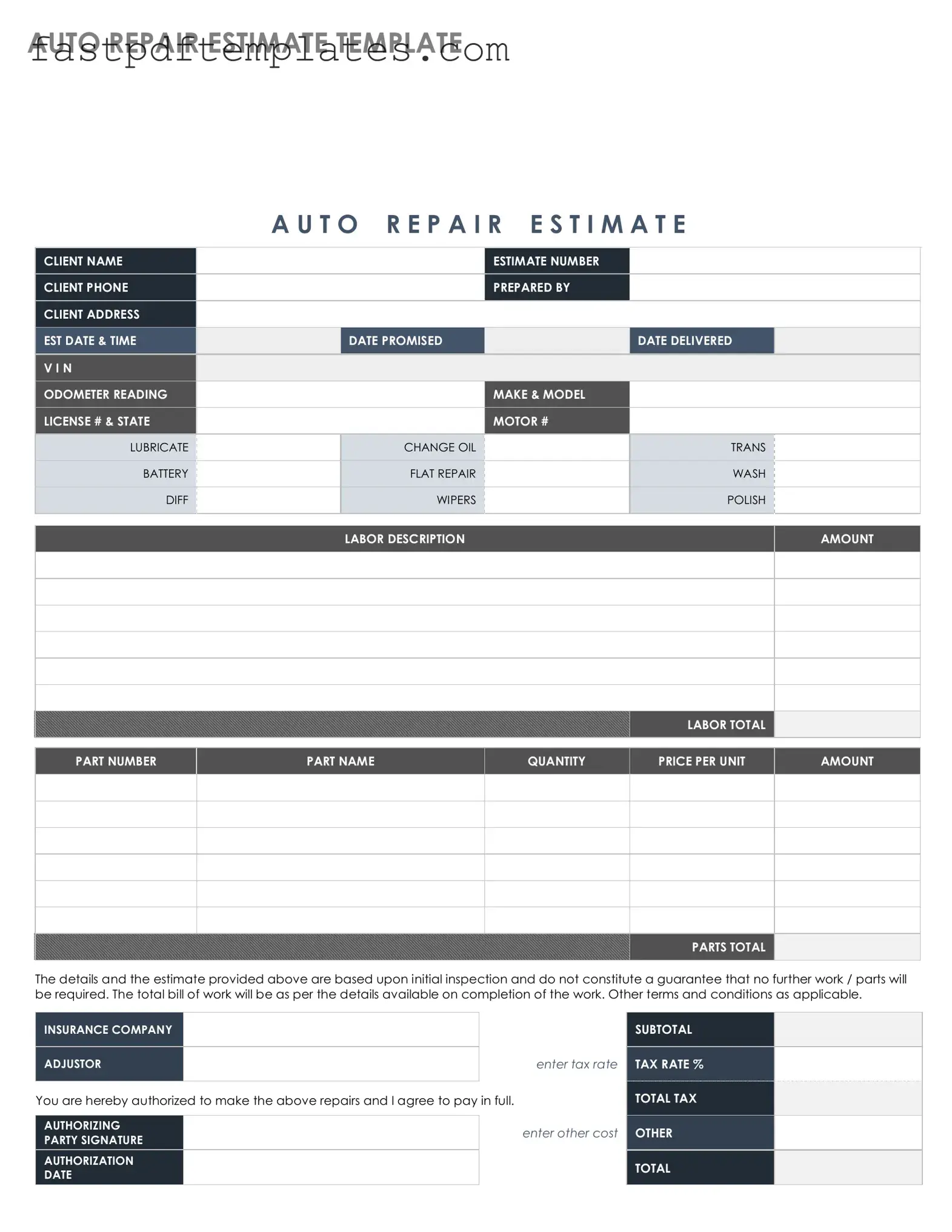The Auto Repair Estimate form bears similarities to the Invoice, a document that outlines the services rendered and the costs associated with those services. Both documents serve to provide clarity and transparency regarding financial transactions. While the Auto Repair Estimate outlines anticipated costs before work begins, the Invoice reflects the actual costs incurred after the work has been completed. This comparison highlights the importance of both documents in maintaining clear communication between the service provider and the customer.
Another document that shares characteristics with the Auto Repair Estimate is the Work Order. A Work Order details specific tasks to be performed on a vehicle, often including labor and parts needed. Like the Auto Repair Estimate, it serves as a guide for the service provider, ensuring that all necessary work is accounted for. However, the Work Order is typically generated after the estimate has been approved, transitioning from a proposal to a directive for action.
The Repair Order is also akin to the Auto Repair Estimate. This document is created when a vehicle is brought in for service and lists the repairs requested by the customer. While the Repair Order may include estimated costs, it primarily focuses on the services to be performed. The Auto Repair Estimate, on the other hand, provides a more comprehensive financial overview, allowing customers to understand potential expenses before committing to the repairs.
The Parts Order form shares similarities as well, as it details the specific components needed for repairs. This document is crucial for auto repair shops, ensuring that they procure the correct parts for the job. Like the Auto Repair Estimate, the Parts Order helps in budgeting for repairs, but it focuses solely on the materials rather than the overall service costs.
Service Agreements often resemble the Auto Repair Estimate in that they outline the terms and conditions of service. While the Estimate provides a financial projection, the Service Agreement details the responsibilities of both the service provider and the customer. Both documents aim to set clear expectations, but the Service Agreement is broader in scope, often covering warranties, liability, and service guarantees.
The Repair History document also parallels the Auto Repair Estimate in its function of documenting service transactions. This record provides a chronological account of all repairs and maintenance performed on a vehicle. While the Auto Repair Estimate anticipates future costs, the Repair History reflects past services, helping customers understand their vehicle's maintenance needs and budget for future repairs.
The Customer Approval form is another document that bears resemblance to the Auto Repair Estimate. This form is used to obtain consent from the customer before any work is performed. Like the Auto Repair Estimate, it ensures that the customer is informed about the costs and services involved. However, the Customer Approval form is more focused on securing authorization, whereas the Auto Repair Estimate serves to inform and prepare the customer financially.
Lastly, the Warranty Document is similar in that it outlines the terms of coverage for repairs and parts. While the Auto Repair Estimate provides an upfront cost analysis, the Warranty Document addresses potential future costs associated with repairs. Both documents are essential for customers to understand their financial obligations, but they serve different purposes in the overall repair process.

